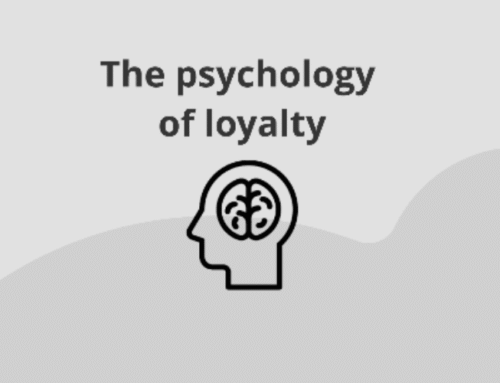Strategic Customer Experience: Lower Costs, Higher Loyalty
As you know, achieving customer loyalty while managing costs is the ultimate balancing act. A common misconception is that delivering a top-notch customer experience is a very expensive endeavor. However, the truth is that businesses can strategically reduce costs while simultaneously enhancing the customer journey and breeding loyalty. In this blog post, we’ll explore a win-win strategy by shifting the perspective from cost-cutting to strategic improvement in customer experience and we’ll walk you through a few bLoyal features, that hold the key to achieving both lower costs and higher customer loyalty in your marketing strategy.

Shifting the Perspective – From Cost-Cutting to Strategic Improvement
Often, when businesses think about cost reduction, they resort to cost-cutting measures that may affect the customer experience in a negative way. This approach can lead to a vicious cycle where customer dissatisfaction increases, and even more customer service efforts are needed to address issues that arise from the initial cost-cutting measures.
However, a strategic approach involves a shift in perspective. Instead of viewing customer experience improvement as a drain on resources, consider it as an investment that pays dividends in terms of cost efficiency and customer loyalty.
When businesses focus on strategically improving customer experiences, they start looking at the root causes of customer issues. This shift in perspective leads to a holistic approach where upstream touchpoints become the focal point of attention.
Upstream Touchpoints – The Hidden Levers for Cost Efficiency
Upstream touchpoints are the critical moments in a customer’s journey that have a significant impact on downstream interactions. These touchpoints include everything from initial contact, expectation-setting at point-of-sale, product instructions, billing, and correspondence. They are often overlooked, yet they can be the hidden levers for cost efficiency.
Let’s consider an example: A company sells a complex product with unclear instructions. Customers frequently call the customer service line with questions and concerns about product usage. The cost of handling these calls adds up over time, creating an expensive customer service burden.
However, if the company invests in improving the clarity of product instructions and includes troubleshooting guides, customers are more likely to resolve issues independently. This leads to a reduction in the volume of customer service calls, resulting in cost savings.
The Win-Win of Improved Upstream Touchpoints
Improving upstream touchpoints not only reduces costs but also enhances customer loyalty. When customers encounter fewer problems and experience a smoother journey from the get-go, they are more likely to have a positive perception of your brand.
Here’s how you can improve your customers’ upstream touchpoints:
- Identify and Prioritize Issues: Begin by identifying the most common pain points in the customer journey. Collect feedback from customers, analyze customer service data, and assess where issues are most frequently encountered.
- Invest in Solutions: Once you’ve identified the pain points, allocate resources to address them. This might involve revising product instructions, simplifying billing processes, or providing clearer communication at the point of sale.
- Measure Impact: Continuously monitor and measure the impact of these improvements. Keep track of customer service call volume, customer satisfaction scores, and customer retention rates. You should see improvements in all these areas as a result of your efforts.

Here are three examples of companies that have invested in improving their customer journey, along with hypothetical scenarios of what might have happened if they had chosen to cut their budget instead:
Example 1: Starbucks – Starbucks Rewards Program
Investment in Loyalty and Membership Management:
Starbucks, the global coffee chain, invested significantly in its Starbucks Rewards program. The program offers members rewards like free drinks and food items, early access to new products, and personalized offers based on their purchase history. The company uses a robust membership management system to track and engage with customers.
Outcome:
- Increased Customer Loyalty: The Starbucks Rewards program has helped foster strong customer loyalty. Members are more likely to frequent Starbucks and spend more on each visit.
- Valuable Customer Data: The membership system collects data on customer preferences, allowing Starbucks to personalize marketing efforts and product recommendations.
- Revenue Growth: The program has contributed to revenue growth by incentivizing repeat business and larger purchases.
Potential Consequences of Not Making the Investment:
- Decreased Customer Loyalty: Without the rewards program, Starbucks might have struggled to differentiate itself from competitors. Customers may have been less likely to return regularly.
- Missed Customer Data Opportunities: Starbucks would have missed out on valuable customer data and insights that can inform product offerings and marketing strategies.
- Reduced Revenue Growth: The absence of a loyalty program could have resulted in lower average spending per customer and slower revenue growth.
Example 2: Amazon – Amazon Prime
Investment in Loyalty and Membership Management:
Amazon’s Amazon Prime subscription service is a great example of investing in customer loyalty. Prime members pay an annual fee and receive benefits such as free two-day shipping, access to Prime Video, Prime Music, and more. Amazon uses sophisticated membership management tools to track member benefits and engagement.
Outcome:
- Increased Customer Loyalty: Amazon Prime members tend to shop more frequently on the platform, leading to higher customer retention.
- Upselling Opportunities: Amazon leverages Prime memberships to upsell additional services like Amazon Fresh, Kindle Unlimited, and Audible.
- Enhanced Customer Engagement: The membership system allows Amazon to offer exclusive deals and personalized recommendations, keeping members engaged and satisfied.
Potential Consequences of Not Making the Investment:
- Weakened Customer Loyalty: Without the enticing benefits of Amazon Prime, Amazon may have struggled to retain customer loyalty in the long term.
- Missed Upselling Opportunities: Amazon could have missed the chance to upsell additional services like Amazon Fresh and Kindle Unlimited, limiting revenue growth.
- Less Engaged Customer Base: The absence of Prime could have led to decreased customer engagement and a lack of loyalty that other platforms might capitalize on.
Example 3: Sephora – Sephora Beauty Insider Program
Investment in Loyalty and Membership Management:
Sephora, the beauty and cosmetics retailer, has invested a lot in its Beauty Insider program. Customers can sign up for free and earn points for every purchase, which can be redeemed for beauty products. Sephora uses a membership management system to track points, offer tiered rewards, and personalize marketing efforts.
Outcome:
- Increased Customer Retention: The Beauty Insider program encourages repeat purchases and customer retention.
- Data-Driven Marketing: Sephora leverages customer data from the program to send personalized product recommendations and promotions.
- Community Building: Sephora fosters a sense of community among members, encouraging them to share reviews, tips, and beauty advice.
Potential Consequences of Not Making the Investment:
- Reduced Customer Retention: Without the Beauty Insider program, Sephora might have faced higher customer churn rates, as customers would have fewer incentives to stick with the brand.
- Limited Data-Driven Marketing: Sephora would have missed the opportunity to personalize marketing efforts and leverage customer data for targeted recommendations.
- Lower Community Engagement: The absence of a loyalty program could have resulted in a weaker sense of community among Sephora’s customers, reducing their engagement and advocacy.
In each of these examples, not making the investment in loyalty, membership management, or marketing platforms would likely have led to decreased customer loyalty, missed opportunities for revenue growth, and limited access to valuable customer data. These investments have been instrumental in building stronger customer relationships, increasing retention, and maintaining a competitive edge in their respective industries.
In conclusion, the myth that delivering a great, loyalty-building customer experience cost more to deliver is precisely that, a myth. By shifting your perspective from cost-cutting to strategic improvement and focusing on upstream touchpoints, you can achieve both lower costs and higher customer loyalty.
Remember that improving the customer experience is not a one-time effort but an ongoing process. Businesses that continuously invest in enhancing upstream touchpoints will reap the rewards of reduced costs, increased customer loyalty, and a competitive edge in the marketplace.
So, start reevaluating your approach to customer experience, prioritize upstream touchpoints, and watch your business thrive as you simultaneously lower costs and build stronger, more loyal customer relationships.




